Ocelots are similar to house cats but with more predatory charm. With their unique coat, ocelots are gorgeous wild cats, mostly active at night.

Ocelot
Leopardus pardalis
Ocelot Scientific Classification
- Kingdom: Animalia
- Phylum: Chordata
- Class: Mammalia
- Order: Carnivora
- Family: Felidae
- Genus: Leopardus
- Species: Leopardus pardalis
Ocelot Appearance
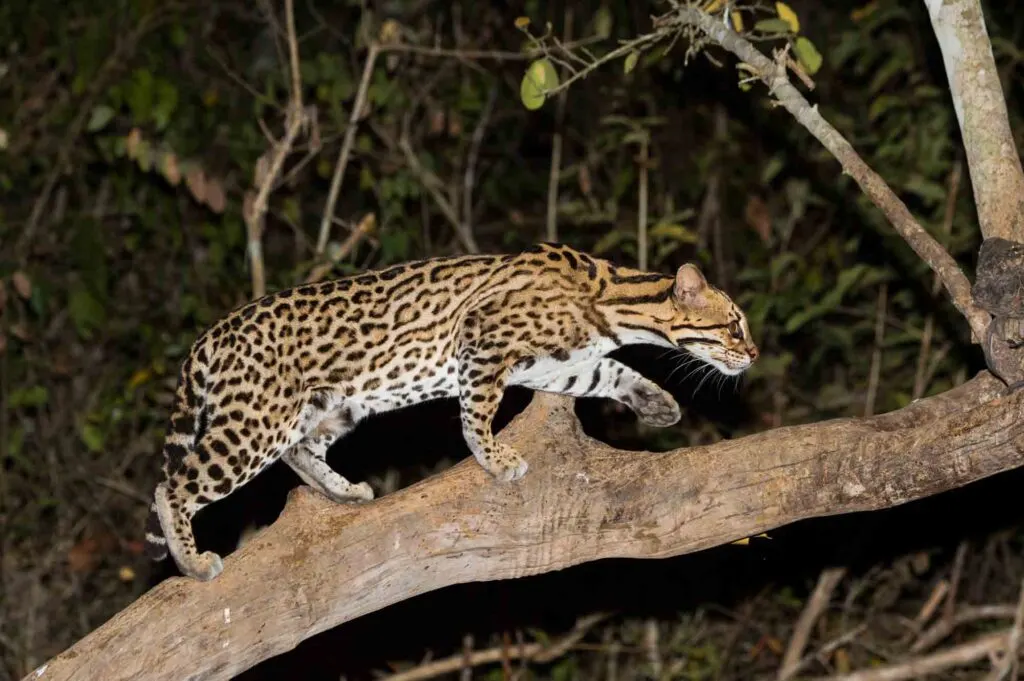
- Lifespan: 8-11 years
- Length: 26-39 inches
- Height: 20 inches up to shoulder
- Weight: 24-35 pounds
- Top speed: 38 mph
The ocelot is a medium-length wild cat of the Americas with an appearance not unlike the leopard. In comparison, housecats would be half their size.
Ocelots are gracious wild cats and have a striking appearance. The fur ranges from gray to golden brown, though it’s often on the golden side. Their body has black and brown spots and patches running down the length of their back, sides, and legs.
As for their tail, it has black spots and rings. Ocelot is second to the Jaguar in size in South America as the holder of the spotted cat title.
About three stripes are present on its face and five on the neck and chest. Stripes also mar the inside of the leg.
Ocelots are black behind the ear with a white mark on the center. Big eyes followed by a slim nose, ocelots would be adorable if not for their predatory speed and agility.
Did you know? Ocelots are resourceful communicators. Each call, cry, or meow, along with the corresponding body language, signifies a specific message.
Ocelot Range & Habitat
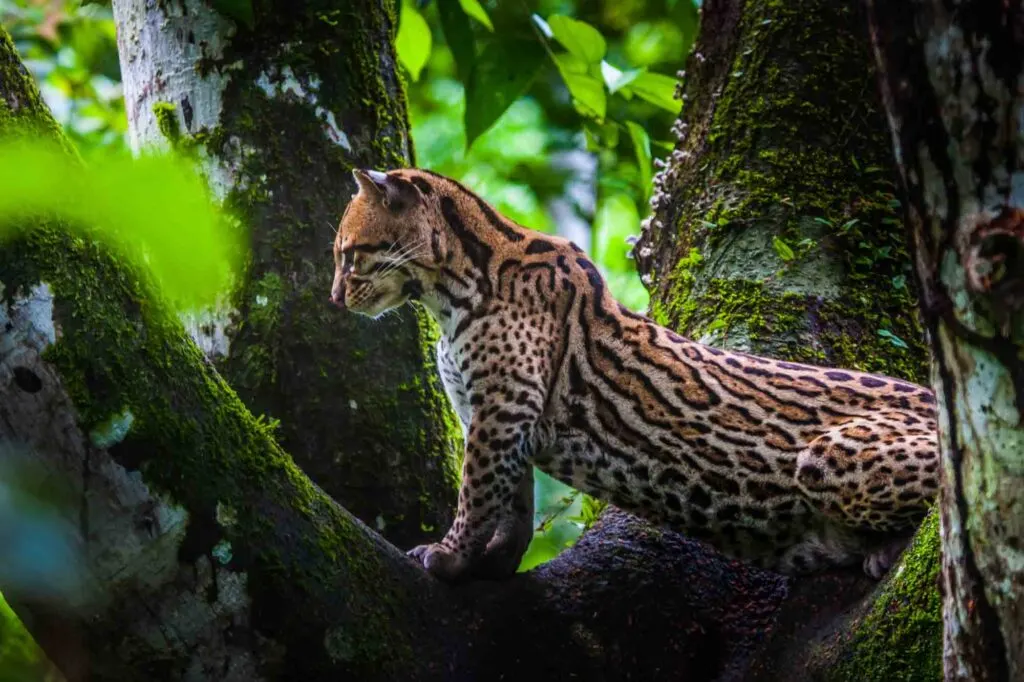
With the exception of Chile, the ocelot is present in every country in South America.
Additionally, ocelot populations have been spotted in Central America. Sporting an endangered status in North America, some are in Arizona and Texas.
The feline habitat includes grasslands with sparse shrubs, mountain areas, tropical forests with frequent rain, thorny shrublands, and so on.
Any place with big trees and dense shrubs serves as a tolerable habitat for ocelots.
Distribution
- Continents: North, Central, and South America
- Countries: Argentina; Belize; Bolivia; Brazil; Colombia; Costa Rica; Ecuador; El Salvador; French Guiana; Guatemala; Guyana; Honduras; Mexico; Nicaragua; Panama; Paraguay; Peru; Suriname; Trinidad and Tobago; United States; Uruguay; Venezuela.
Habitats
Forest | Shrubland | Savanna
Ocelot Behavior and Lifestyle
The ocelot is a nocturnal, solo hunter with a 1 to 4 square miles range.
The daytime is spent climbing up trees and sleeping on the branches or on the dense bushes. Their senses are heightened to the maxim, helping them check out their prey in the dark.
The ocelot uses water to its advantage and is an excellent swimmer. A dispute over territory can result in a deathmatch.
Ocelot Diet
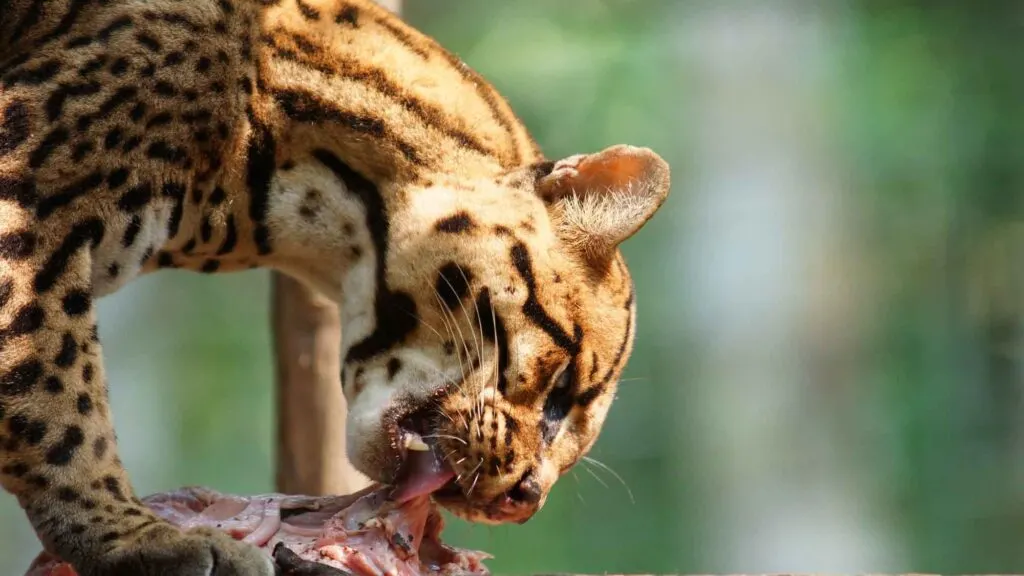
The fangs of ocelots can render most animals their size or immobile. Their teeth are effectively designed to consume meat. They prefer smaller animals, though they go after hawks too.
They are meat-eaters with no interest in fruits or vegetables. Still dangerous around humans, ocelots rarely show curiosity in killing or eating one.
It has an enormous appetite but doesn’t need food constantly for sustenance.
Their diet consists of rabbits, snakes, birds, lizards, mice, fish, frogs, monkeys, lemurs, owls, spiders, deer, and insects. Most of the hunting is down on the ground or water.
Occasionally, ocelots can snatch up a bird passing by. Their agility and speed help them catch up to other fast-running animals.
There is a pickiness present in how they consume their food. Ocelots methodically remove the fur and feathers of their hunts. They focus on the raw flesh. Their teeth don’t allow them to chew the food either. They swallow whole pieces of meat after dividing them into smaller pieces.
Mostly solitary, they might pair up with another ocelot at times. It meowls the way housecats communicate.
Territorial of their hunting grounds, other ocelots entering without permission result in fights. Otherwise, they have a standoffish attitude towards others.
Ocelots mark their hunting grounds by urinating, much like dogs and large cats do.
Ocelot Reproduction and Mating
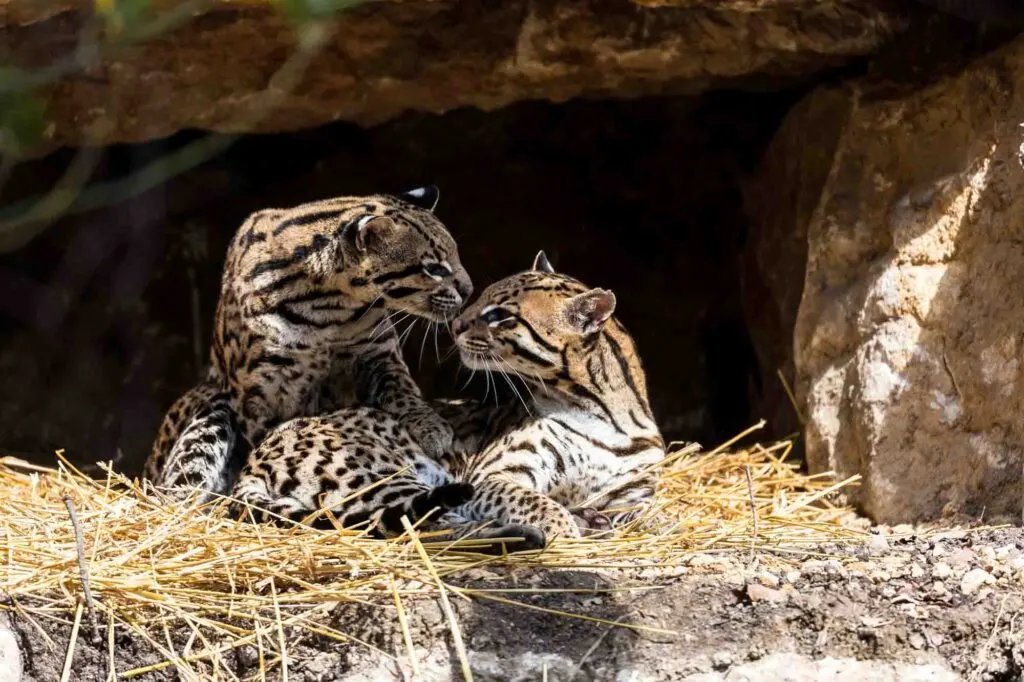
Ocelots yowl to each other during courtship. The female and male ocelots give out short meowls, chuckle, and mutter in the short time they spend together. They scent-mark each other and consume less food.
There isn’t information on whether ocelots mate for life. But due to its ability to breed year-round, that is believed to be the case. Captive ocelots also bond deeper.
No different from housecats, ocelots can mate year-round. They do have peak mating season, though it changes depending on the habitat. It’s autumn in places like Argentina and winter in Texas.
One to three kittens are born 70 days from their mating. The female ocelots craft a den in bushy greens and give birth there.
She guards the kittens during the day but goes hunting for food at night. She does it all on her own as the male ocelot disappears days after mating.
At three months, the kittens are ready to go hunt themselves. A year after their birth, they’re prepared to leave their mother.
Ocelot Conservation Status
Least concern[1]
Ocelot Predators and Threats
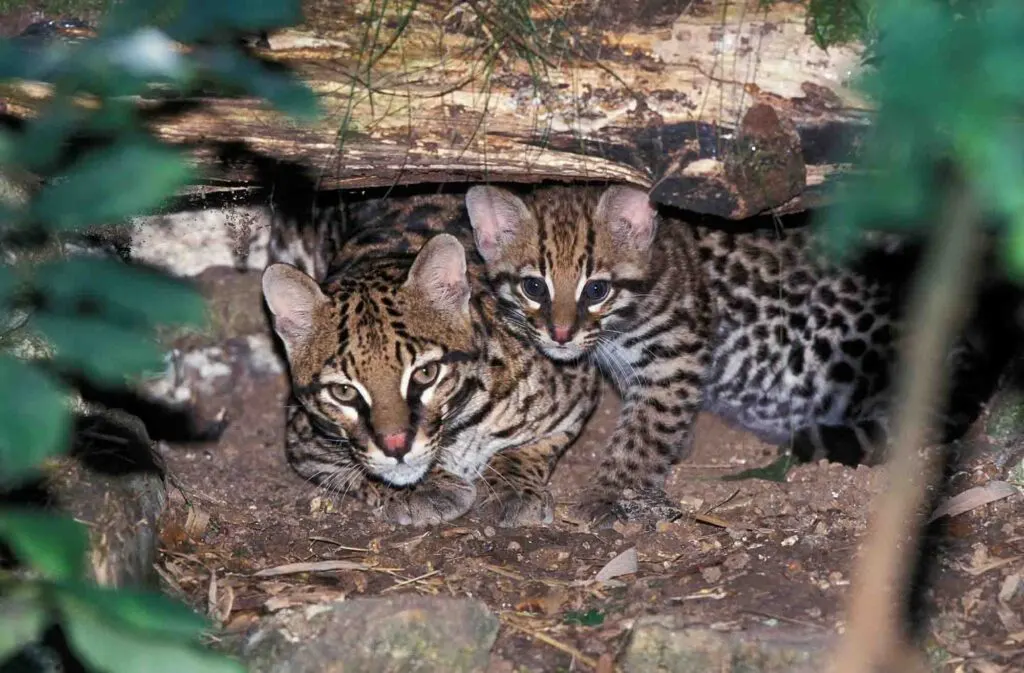
Coyotes, huge raptors, dogs, alligators, pumas, harpy eagles, wild boars, and bobcats are all known to be ocelot predators.
However, humans are also recorded as such. Poachers hunt ocelots for illegal fur extraction.
They are also taken for the legal and illegal pet trade as some places still allow them, and can lose their life while running away or under neglectful care from the owner.
In the US, most ocelots were lost due to feral dogs, traffic accidents, and loss of habitat.
Ocelot puts up a good fight against predators by jumping from tree to tree.
Still, their biggest threat is the loss of habitat due to agricultural and urban expansions.
Ocelot Facts
Here are a few fun facts about ocelots:
- The English name ocelot is derived from ōcēlōtl in Nahuatl, a Mexican language. Oddly enough, it means jaguar rather than ocelot.
- Ocelots were worshiped by ancient Peruvians, as proven by their mural and metal works.
- Ocelots’ eyes are blue at birth but turn dark gray as they grow older.
- Female ocelots are also referred to as queens.
- No two ocelots have the same markings. Each has shapes, spots, and colors unique to its own.
